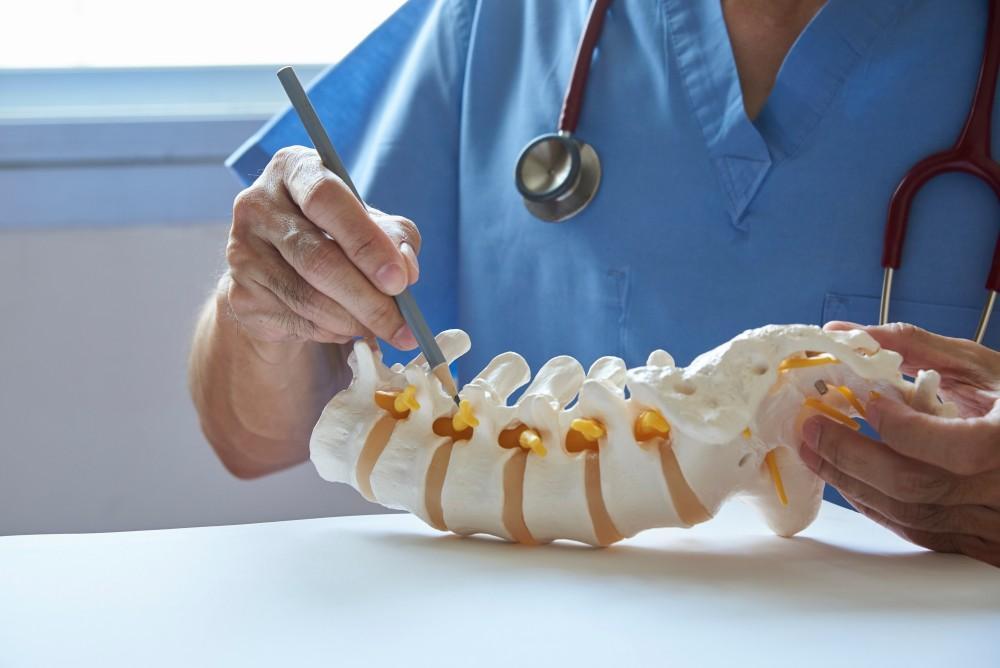
Can Back Surgery Relieve My Osteoarthritis?

Osteoarthritis (OA) is the most common form of arthritis, of which there are over 100 different types. This wear-and-tear condition occurs when joint bones’ protective cartilage wears away, leaving the bones to grate against one another, causing inflammation, pain, and swelling.
OA can affect any joint, including the facet joints of your spine, which allow you to bend, flex, and twist. Doctors and physical therapists use a variety of treatments to address the symptoms of OA — should back surgery be among them?
At Vertrae®, serving the Springfield and Dayton, Ohio area, board-certified neurosurgeon Dr. Kamal R. Woods and his staff do use back surgery to address osteoarthritis, but only after they’ve first exhausted more conservative options. Here’s what you need to know about OA and its treatments, including the possibility of back surgery.
Spinal anatomy and how osteoarthritis affects it
The adult spine contains 24 bony vertebrae stacked on top of each other. They’re separated by intervertebral discs that both provide cushioning and act as shock absorbers.
On the back of each vertebra are two upper and two lower projections known as articular processes. These form facet joints with the articular processes of the vertebrae directly above and below them, stabilizing the spine and allowing for motion. Where the facet joints meet, they’re covered in smooth and flexible articular cartilage that allows the joints to move against each other without friction and absorb shock when the spine bears weight.
When OA develops in the spine, it’s the facet joints that are directly affected.
OA of the spine is increasingly common as you age, leading to inflammation of the facet joints and the concurrent breakdown of their cartilage, as well as causing changes to the vertebrae themselves. One major change is the development of osteophytes, also called bone spurs, which may cause pain if they press on spinal nerve roots. The pain may be localized or lead to radiculopathy, pain that radiates into the head or extremities.
In addition, spinal osteoarthritis may occur concurrently with other spine-related conditions, such as degenerative disc disease (dehydration and flattening of a disc) and/or spinal stenosis (narrowing of the spinal column).
Can back surgery relieve my osteoarthritis?
Surgery is generally not recommended for OA of the spine by itself. It may be indicated if you have an additional spinal condition, such as spinal stenosis or degenerative disc disease.
Before making a recommendation for any treatment, Dr. Woods takes a complete medical history, making note of which symptoms you have and their severity. He then performs a physical exam and orders imaging tests to better see the condition of your spine. When he has all the necessary information, he discusses his findings with you and presents you with your options.
As with osteoarthritis in other joints of the body, it’s best to start with over-the-counter anti-inflammatory medications, epidural steroid injections, exercise, and a round of physical therapy to strengthen your spine and the muscles, ligaments, and tendons around it. If none of these therapies is effective, Dr. Woods may recommend a surgical solution.
As well as traditional surgical techniques, Dr. Woods is an expert in minimally invasive back surgery, including advanced procedures like oblique lumbar interbody fusion (OLIF) and anterior to psoas (ATP) fusion.
While spinal fusion can stabilize a degenerated facet joint, stopping the pain, it generally isn’t recommended for OA of the spine since arthritis tends to affect multiple vertebral levels, and multi-level fusions limit spinal motion too much, stressing the spine and causing pain as a result. Fusion surgery is best reserved for a single affected joint, most often at the L3-L4 or L4-L5 joints in the lower back.
If your OA affects the spinal nerves, most often by the development of a bone spur that presses on a nerve root, then surgical decompression may be an option.
Laminectomy is the primary decompression procedure to remove bone spurs. The surgery’s goal is to relieve your pain and neurological symptoms by removing the spurs and any thickened ligaments causing nerve compression. This type of surgery is usually reserved for patients experiencing severe, chronic pain and/or loss of function due to the bone spurs.
The majority of patients who undergo a laminectomy surgery experience good symptom relief that may last for years, although you should be aware that the bone spurs may return at any time because OA is a progressive disease.
In addition, if Dr. Woods removes a significant amount of bone, the spine becomes unstable, and he’ll also need to perform a fusion surgery.
If you’re experiencing ongoing back pain, it’s time to come into Vertrae for an evaluation, diagnosis, and effective treatment, which may or may not require back surgery. Give our office a call at either location, or book your appointment online today.
You Might Also Enjoy...


4 Benefits of Outpatient Spine Surgery

Am I a Candidate for Kyphoplasty?

Pulled Muscle vs. Pinched Nerve: What's the Difference?

4 Subtle Signs of Sciatica

